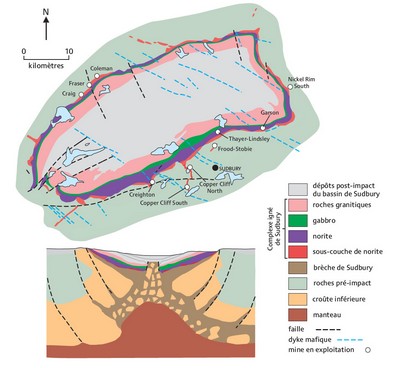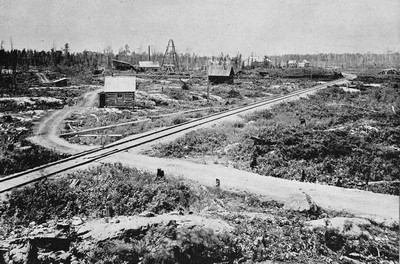For many, the northern Ontario community of Sudbury evokes images of mine shafts and towering smelter chimneys in a lunar-like landscape. What may come as a surprise is that Canada’s first major mining camp is actually the result of an enormous extraterrestrial impact that occurred about 1850 million years ago.
Geologists now believe the culprit was an asteroid, ten kilometres across, which collided with Earth. The resulting massive blow to Earth’s crust caused melting and igneous activity. It is preserved as the Sudbury Igneous Complex, which contains a rich deposit of nickel, copper, and platinum-group-elements.
Alexander Murray, the Geological Survey of Canada’s assistant provincial geologist, created and published the first map of the region in 1856. However, it was only during the construction of the Canadian Pacific Railway in 1883 that a blacksmith noticed copper-bearing rocks on a hillside. The presence of valuable ore in the area was confirmed a year later by Alfred Selwyn, the Survey’s second director (1869-1895). What followed was one of the largest staking rushes in Canadian history.
Category : Exploration
Decade : 1850s
Reference
Natural Resources Canada and Ontario Geological Survey, 2015. Discovery Site of the Sudbury Mining Camp, Greater Sudbury: Birthplace of a world famous mining district; Geo Tours Northern Ontario series. [Free download from http://www.mndm.gov.on.ca/en/mines-and-minerals/geology]



